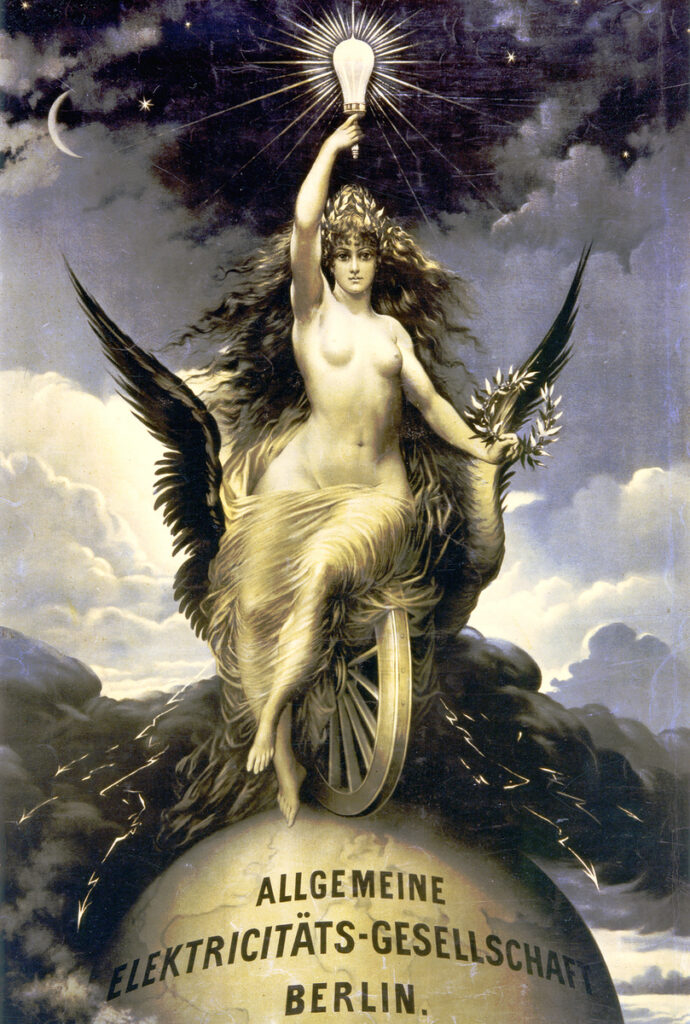
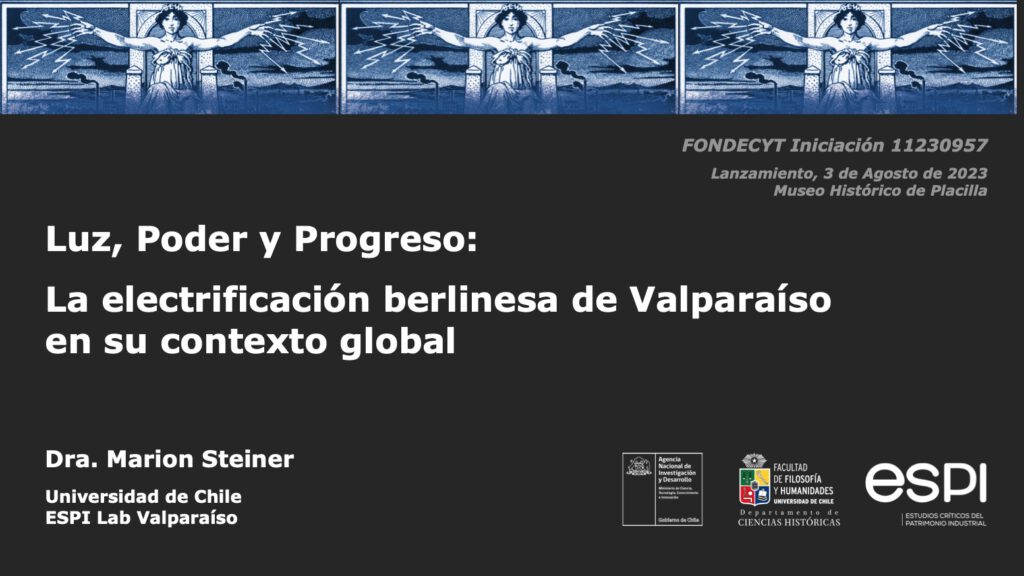
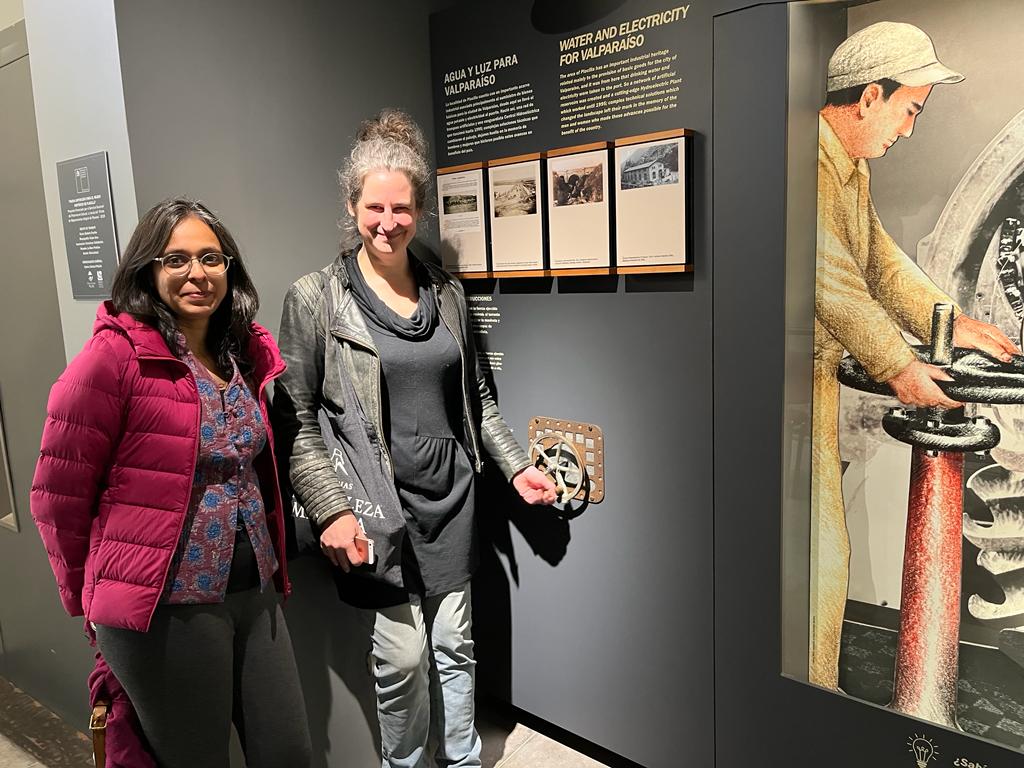
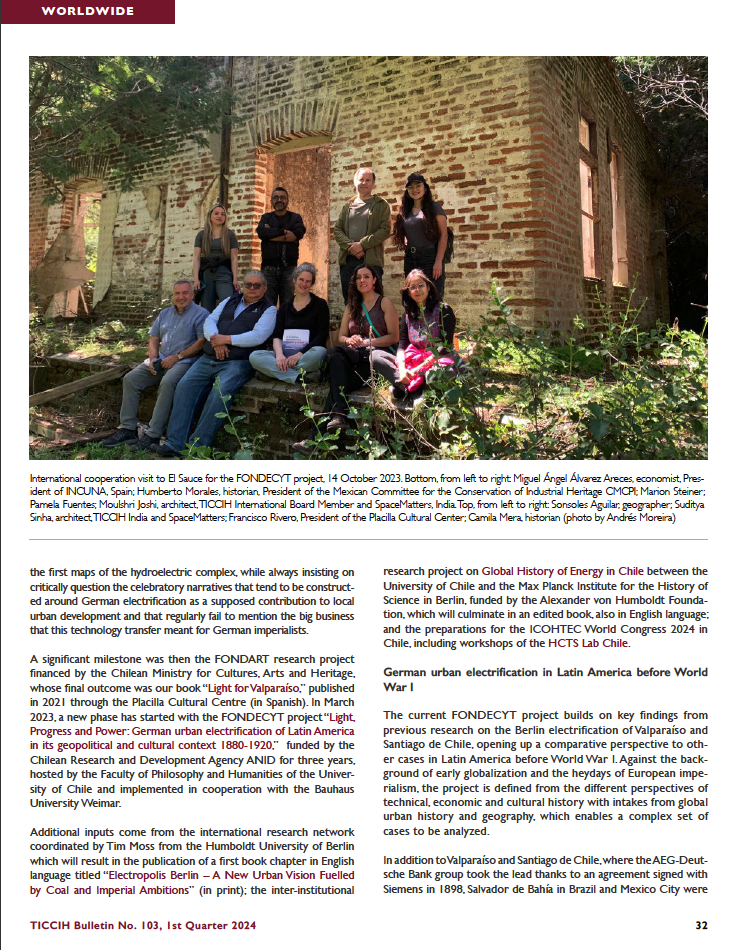
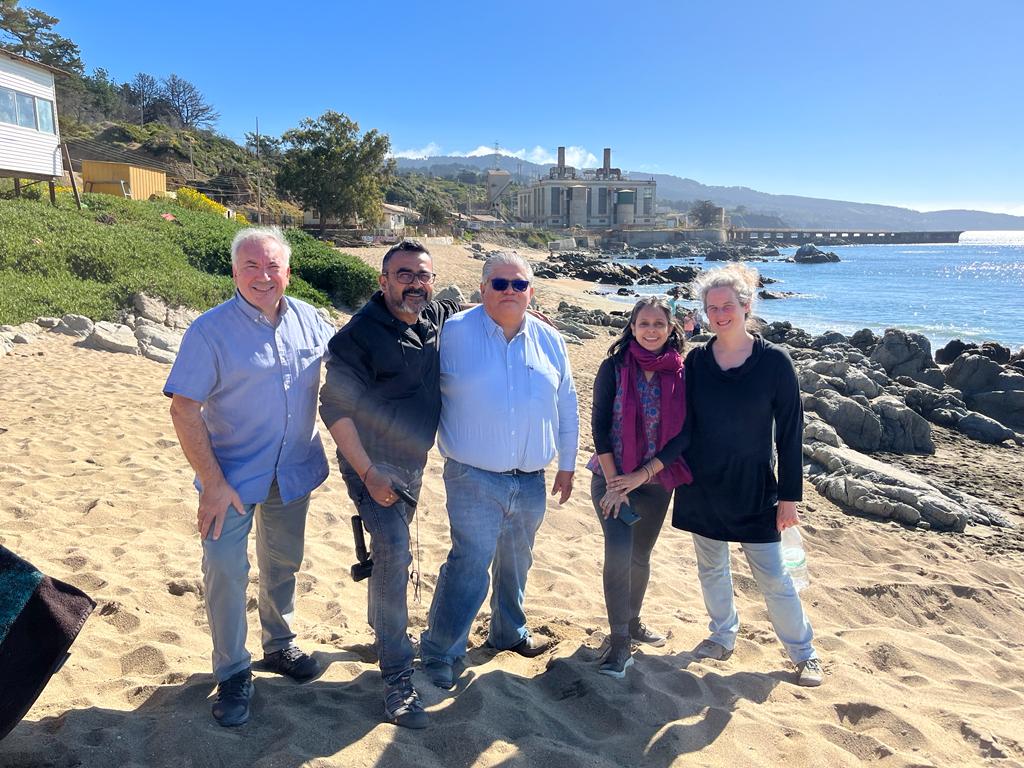
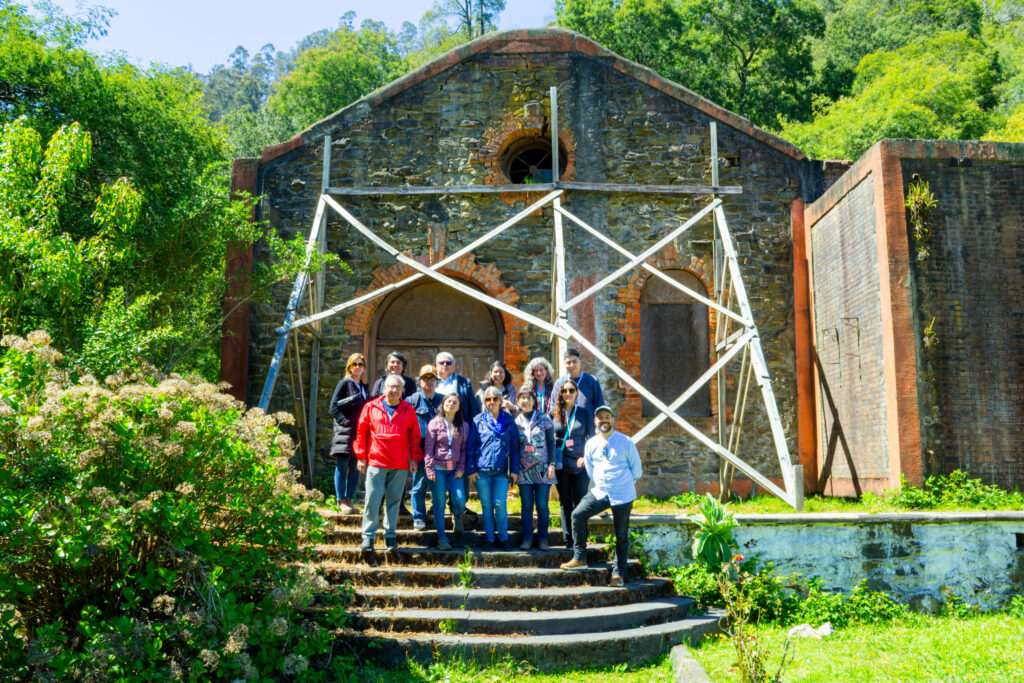
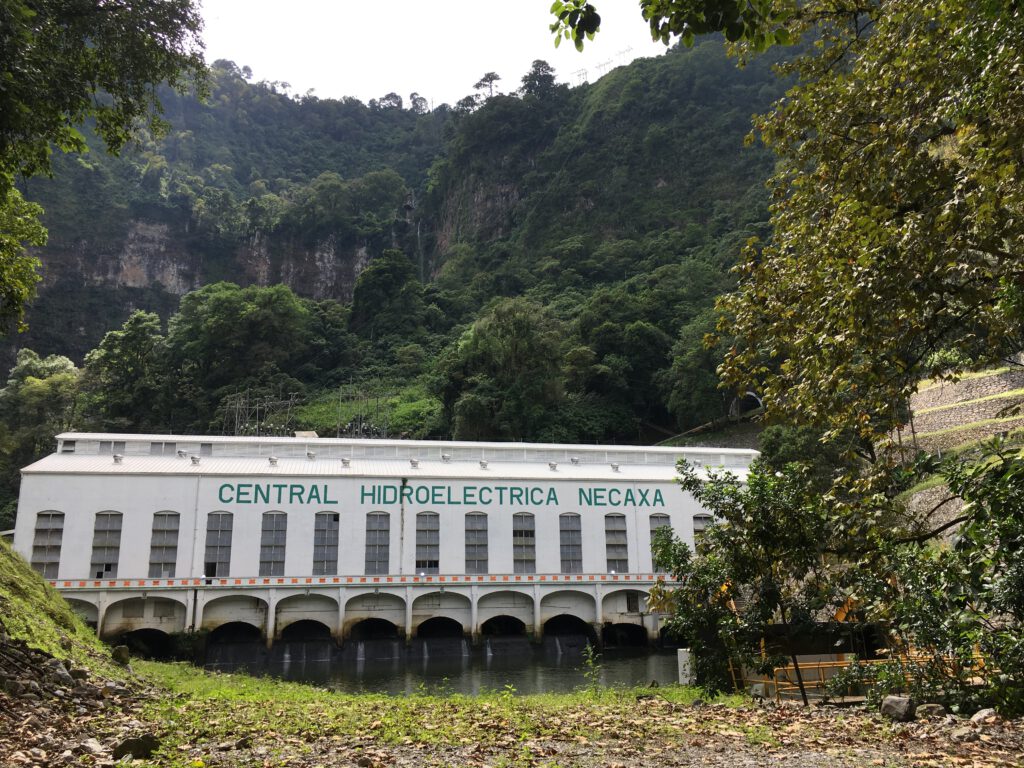
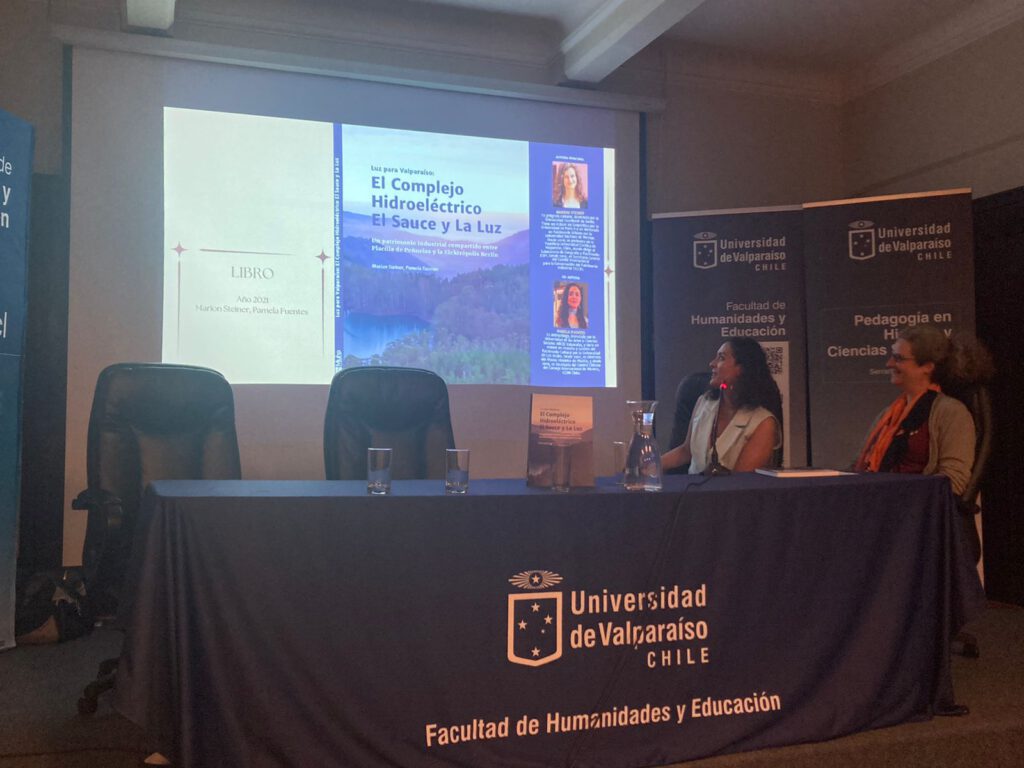
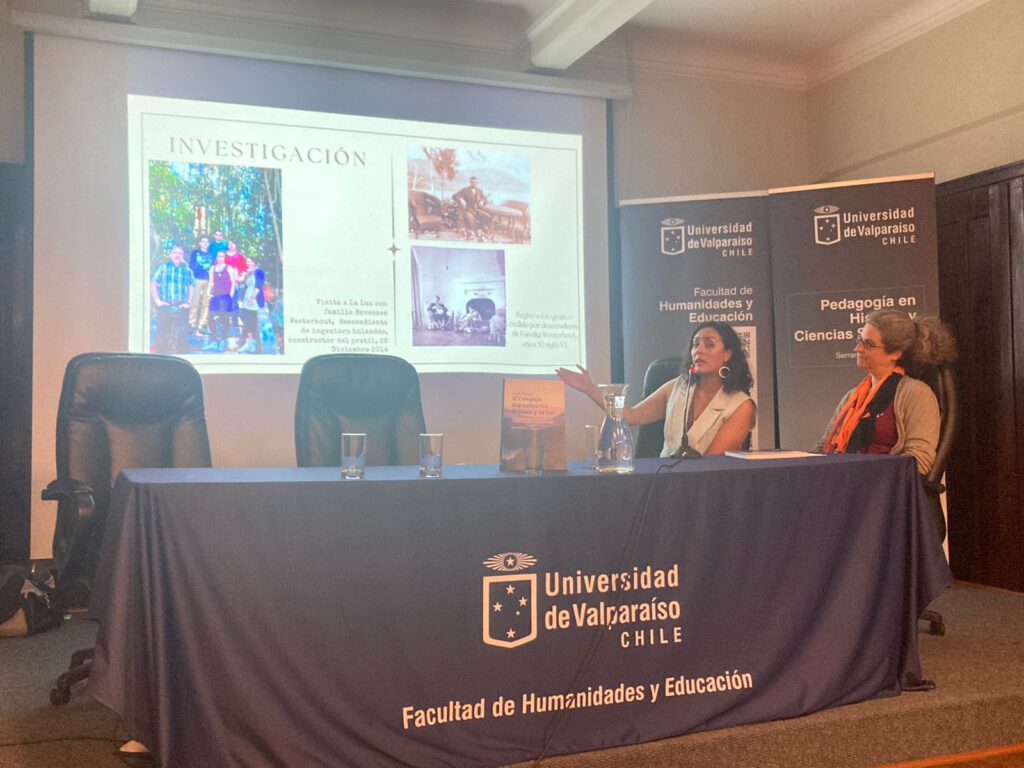
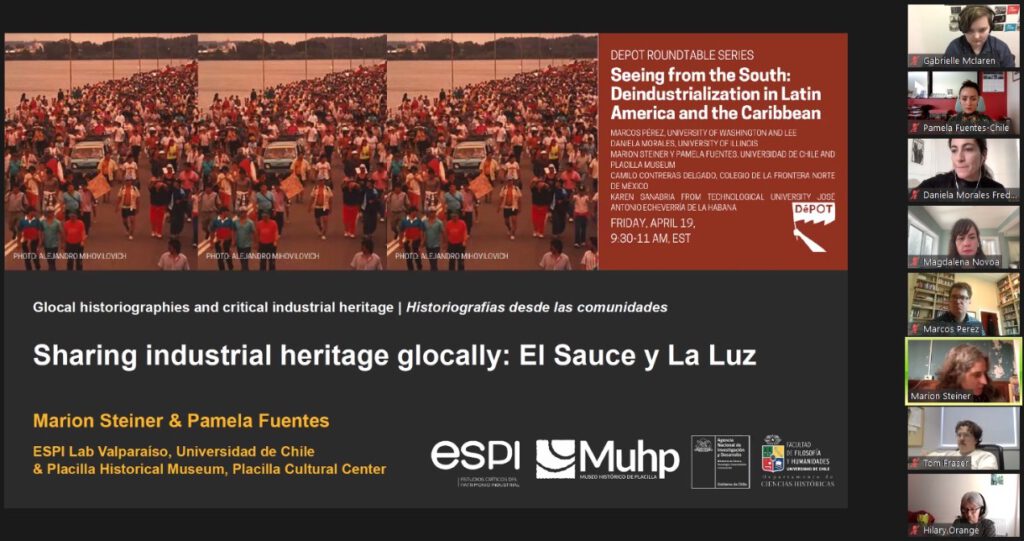
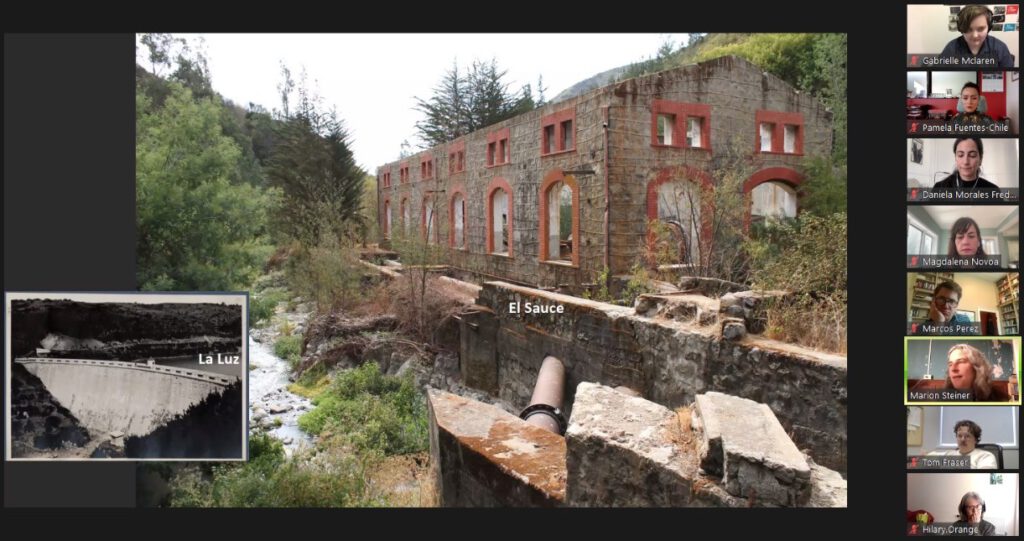
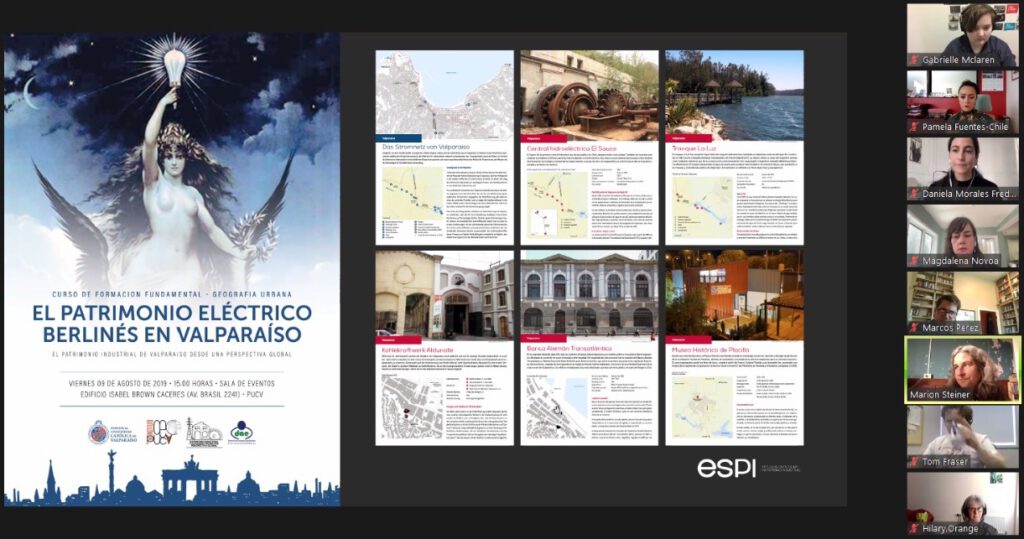
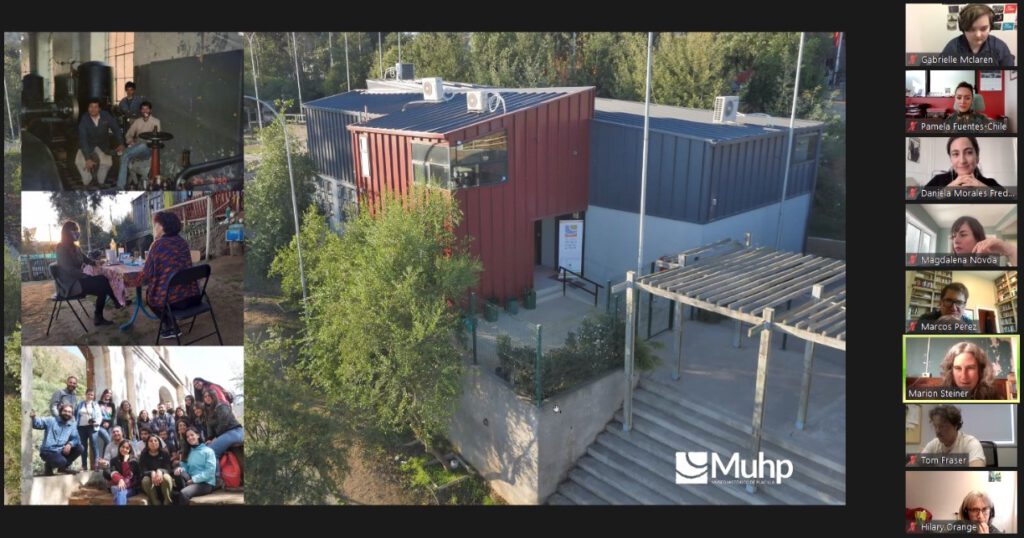
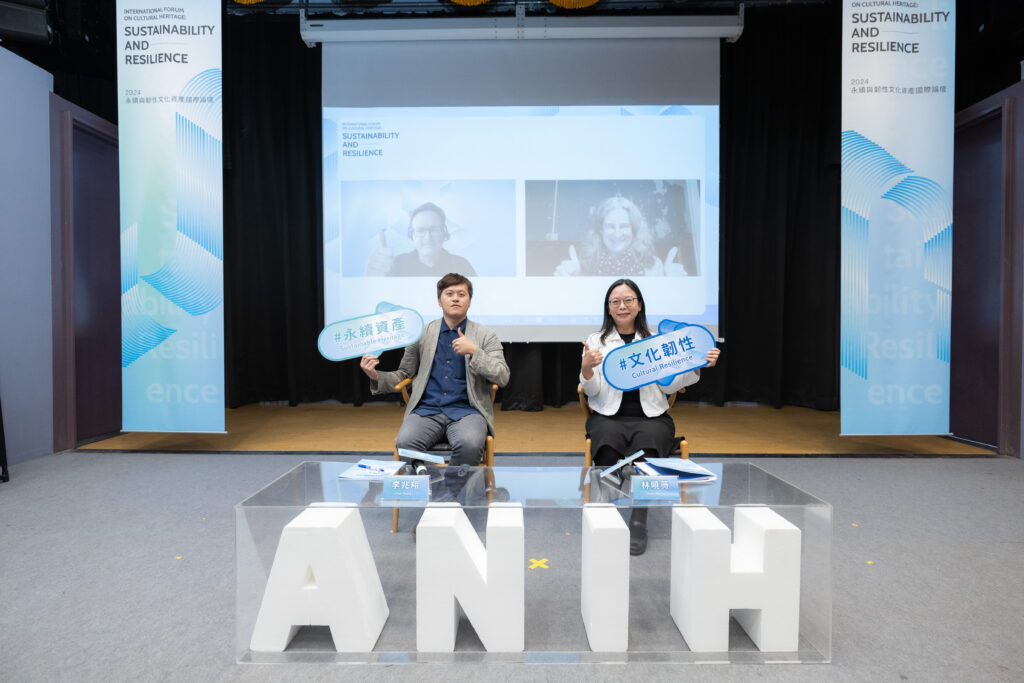
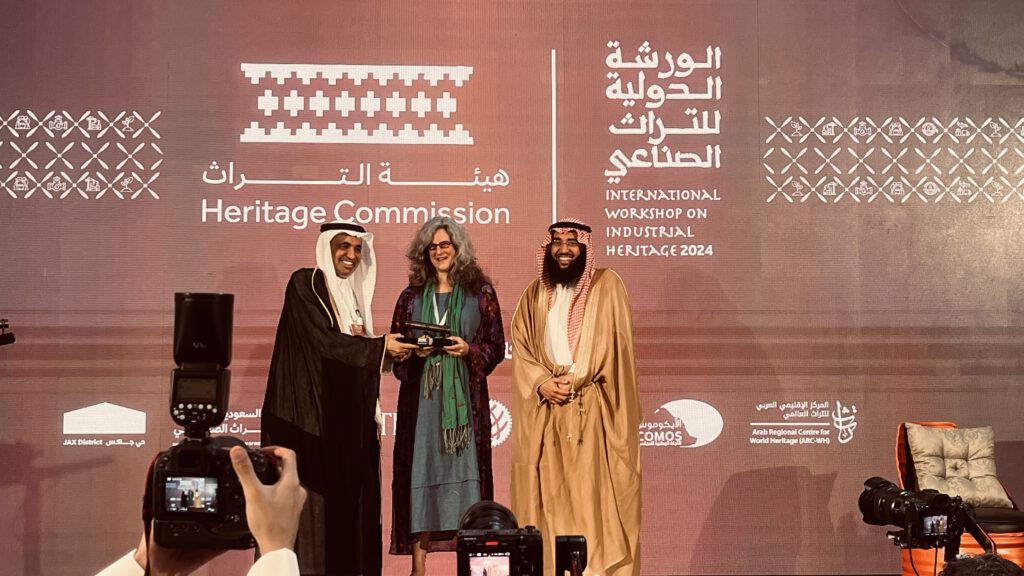
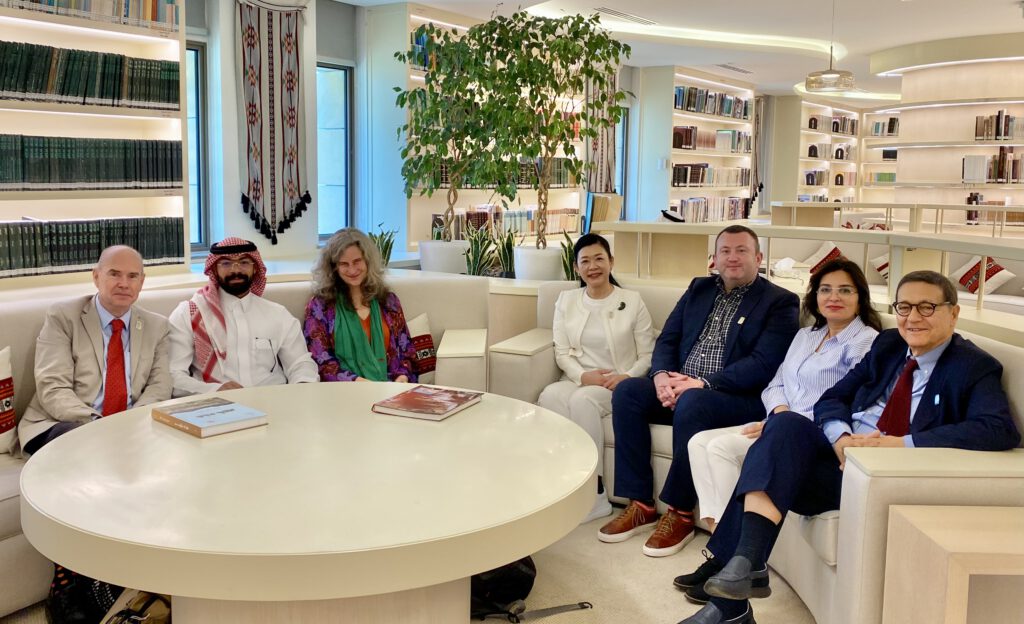
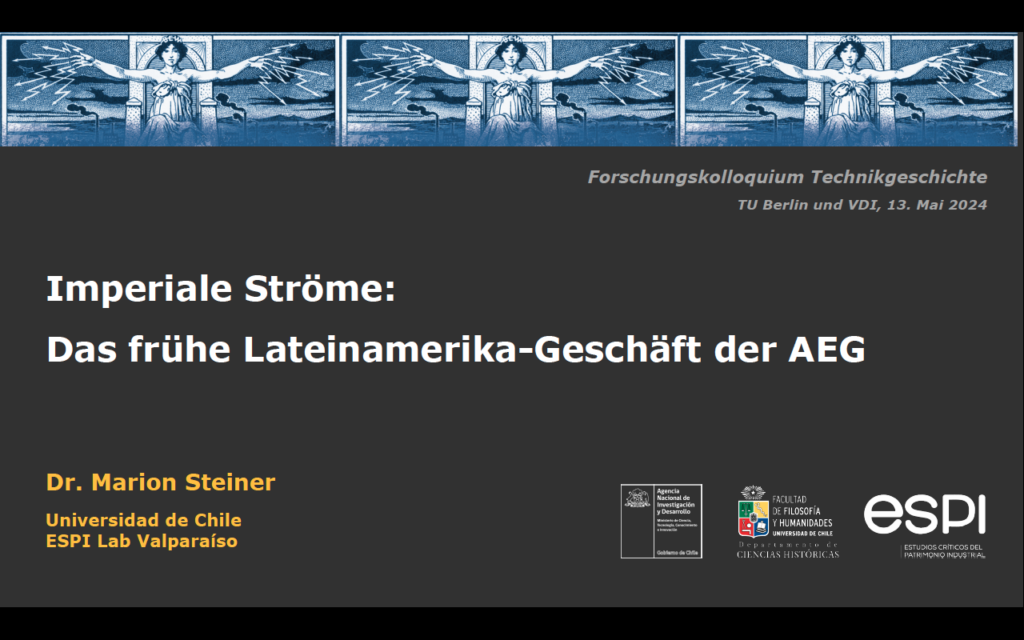
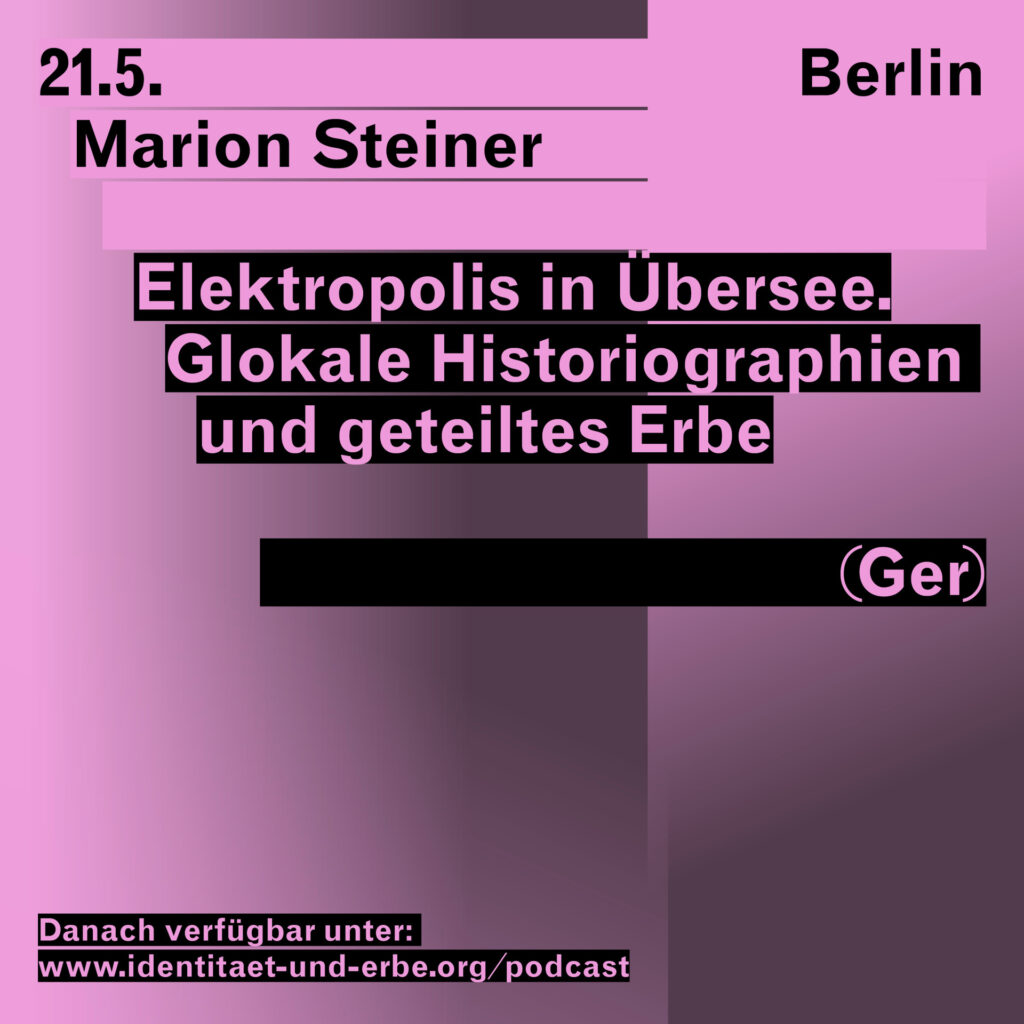
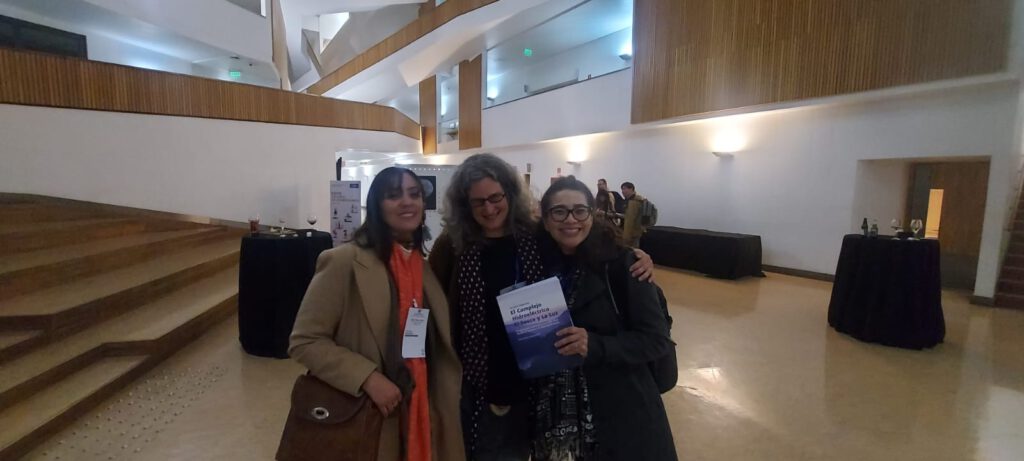
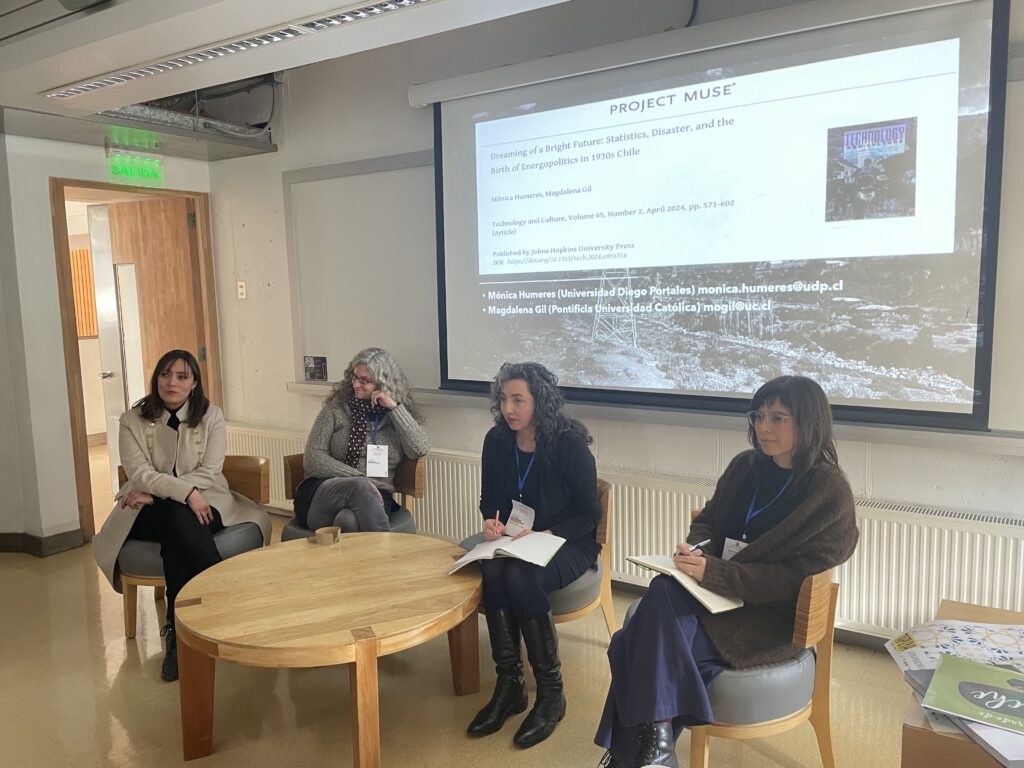
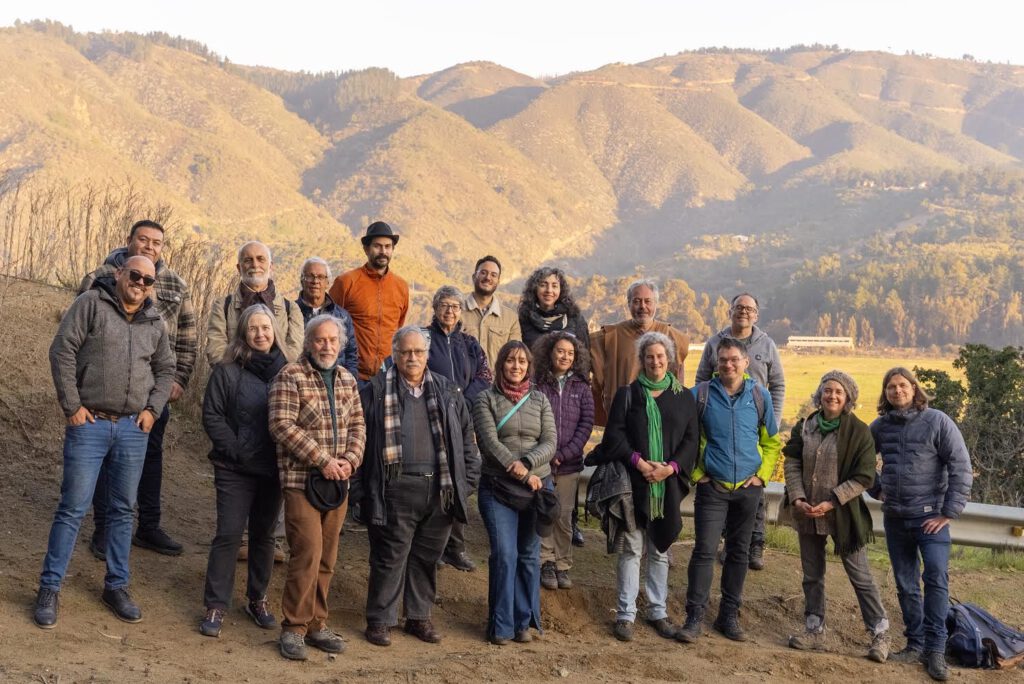
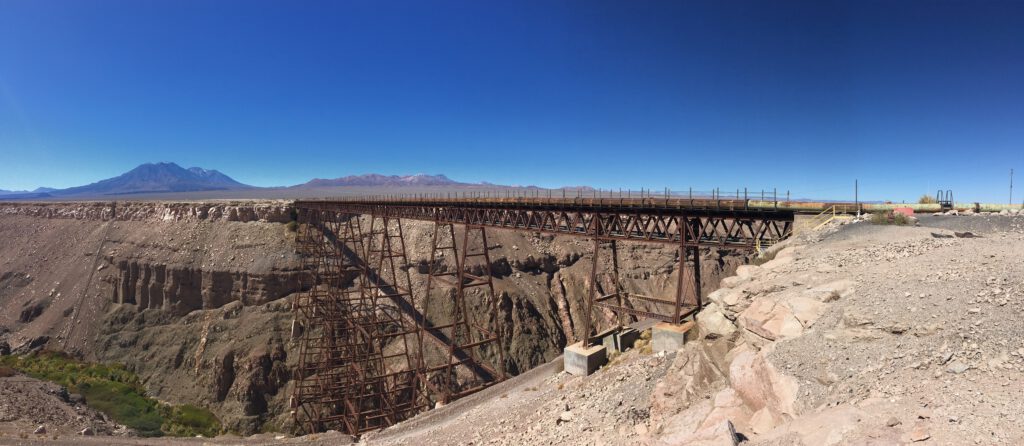
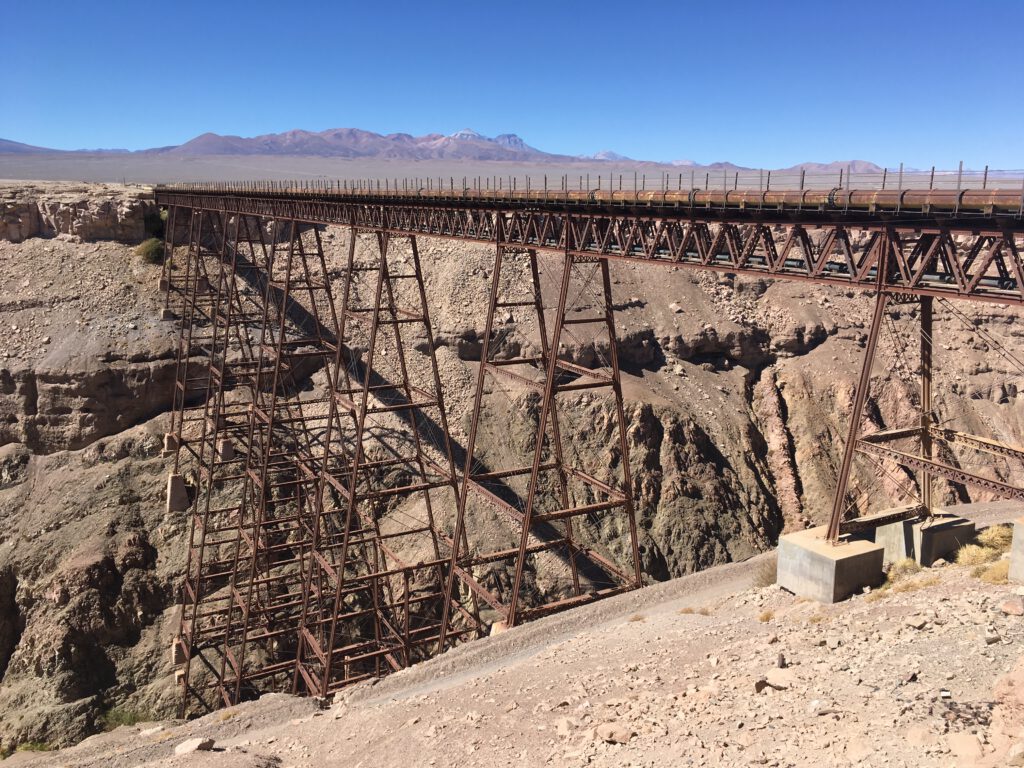
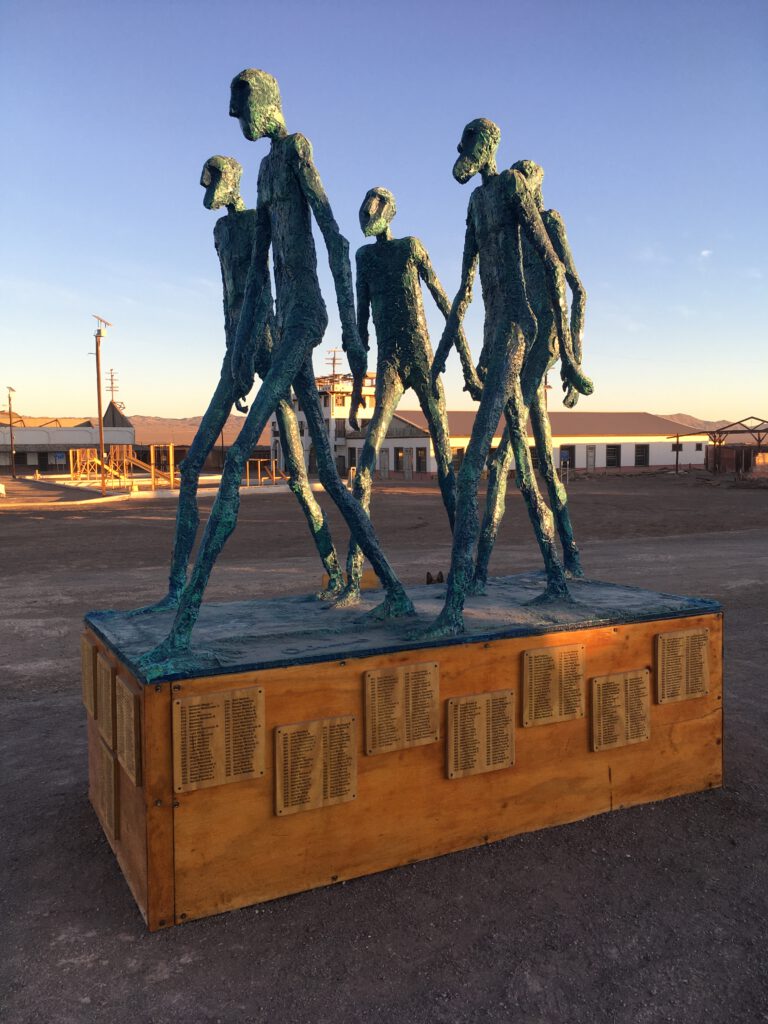
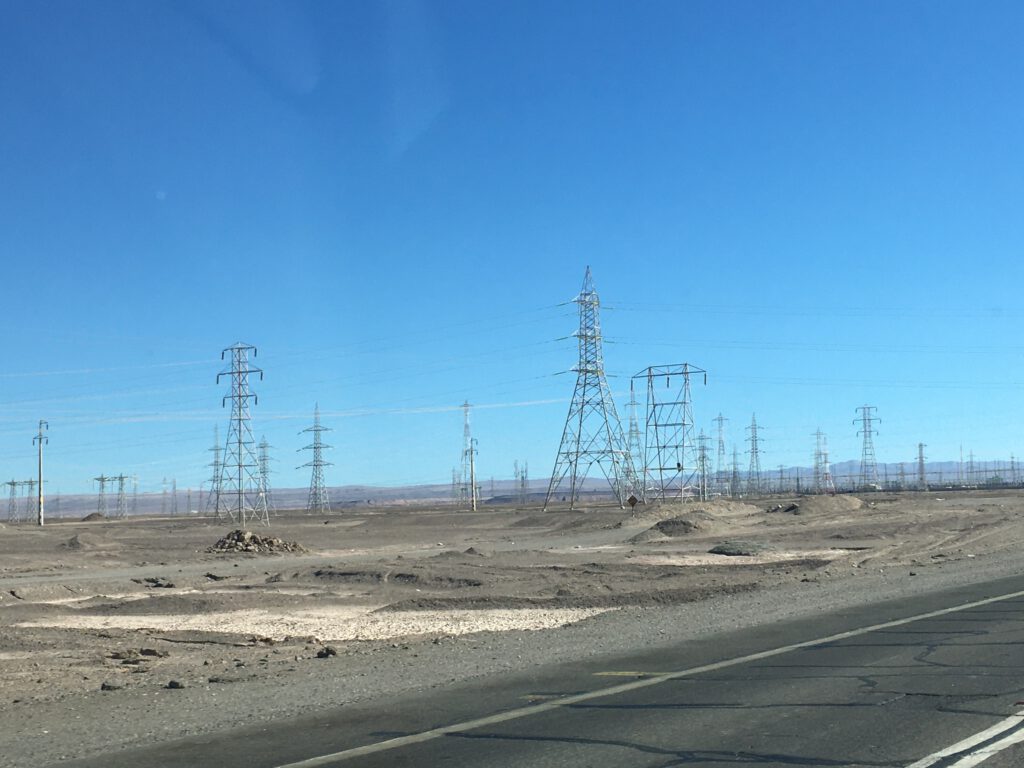
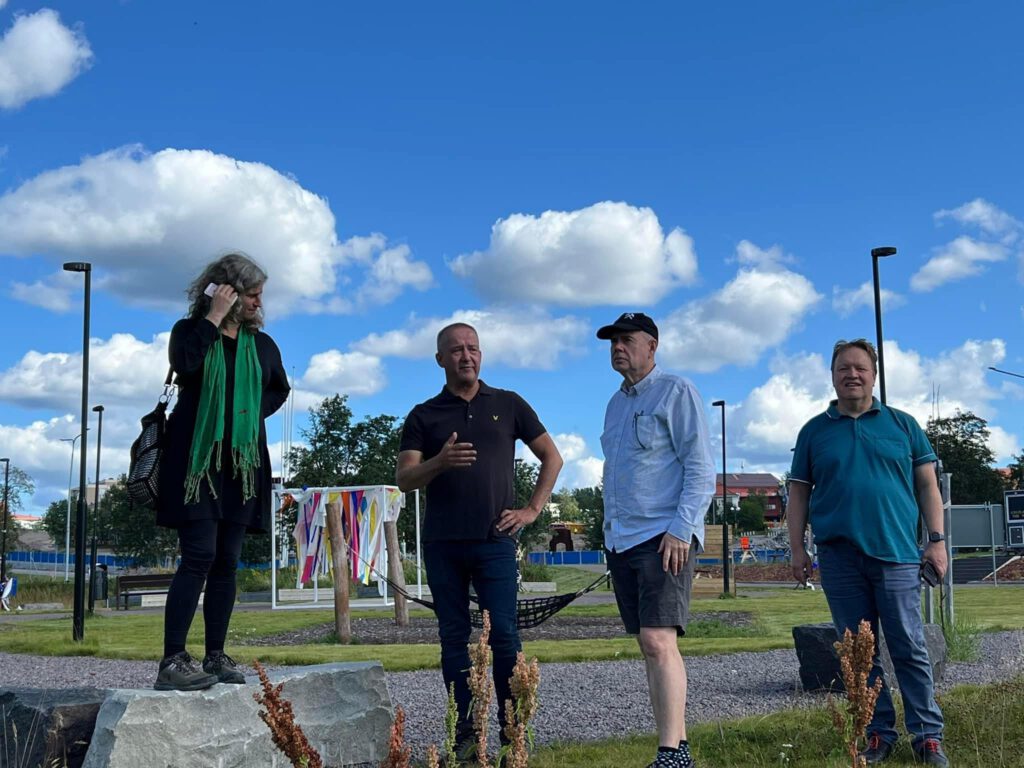
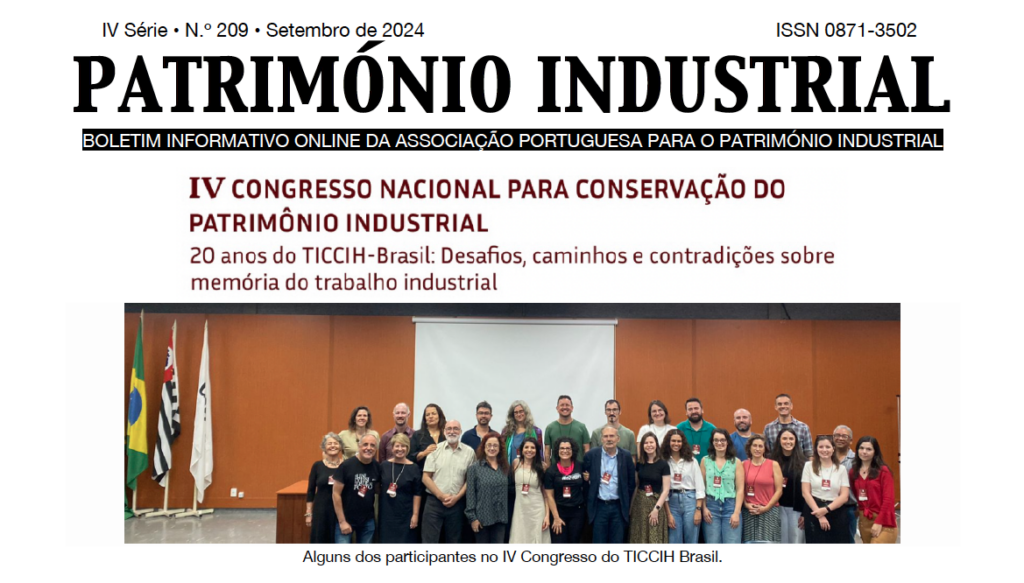
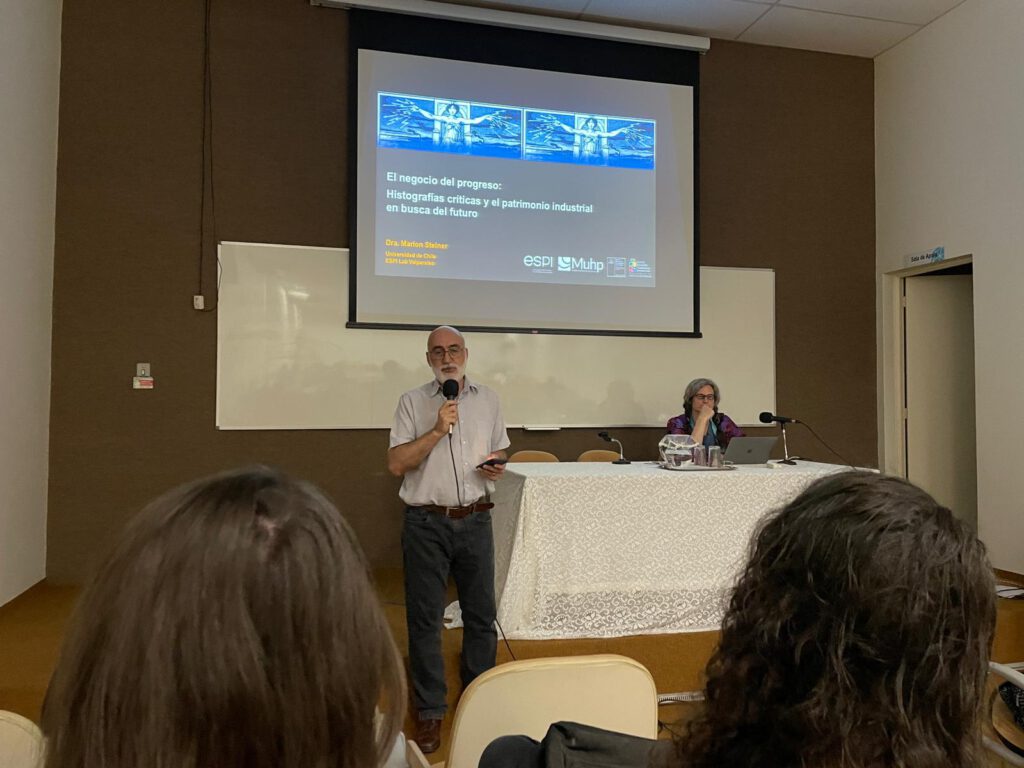
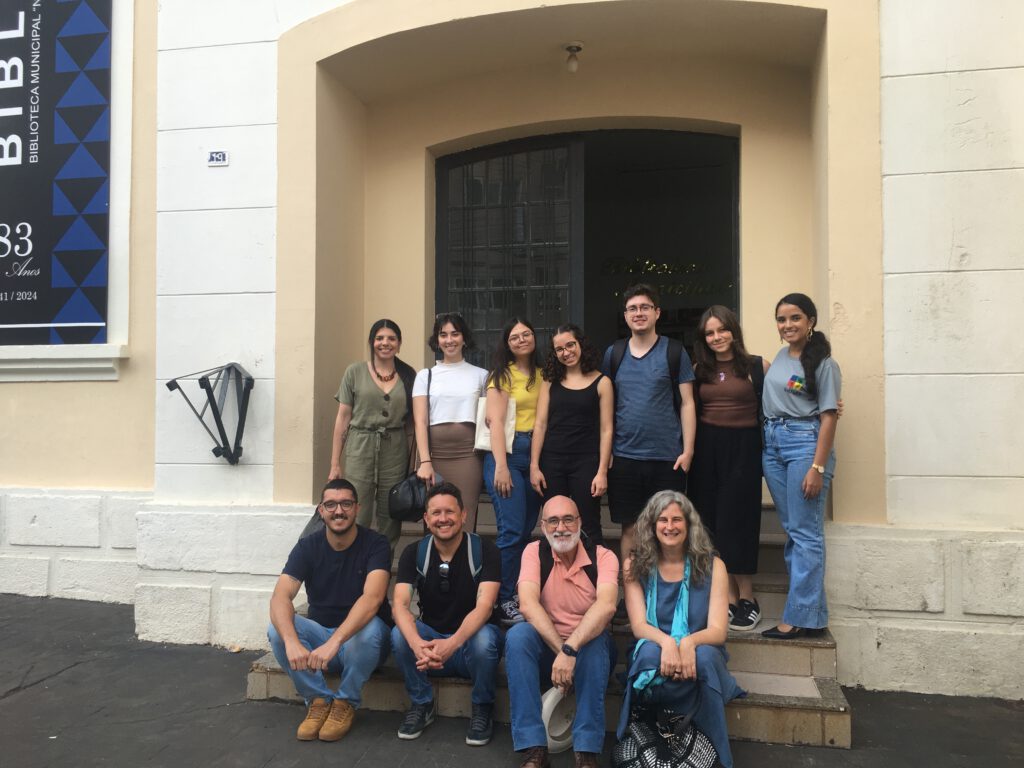
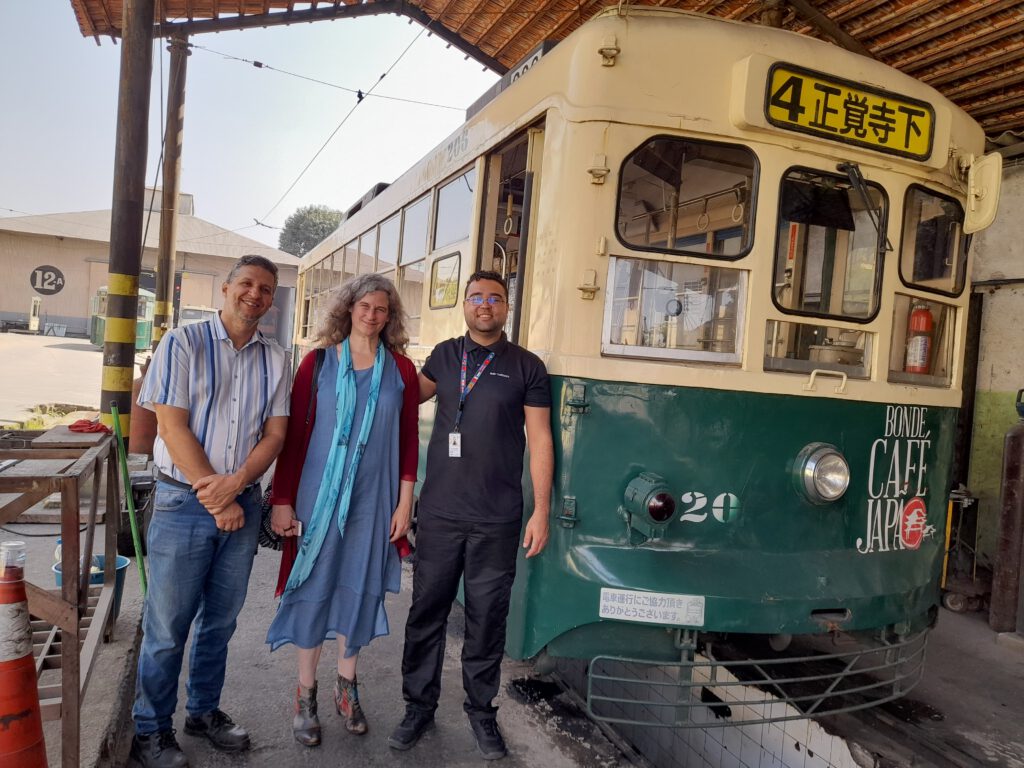
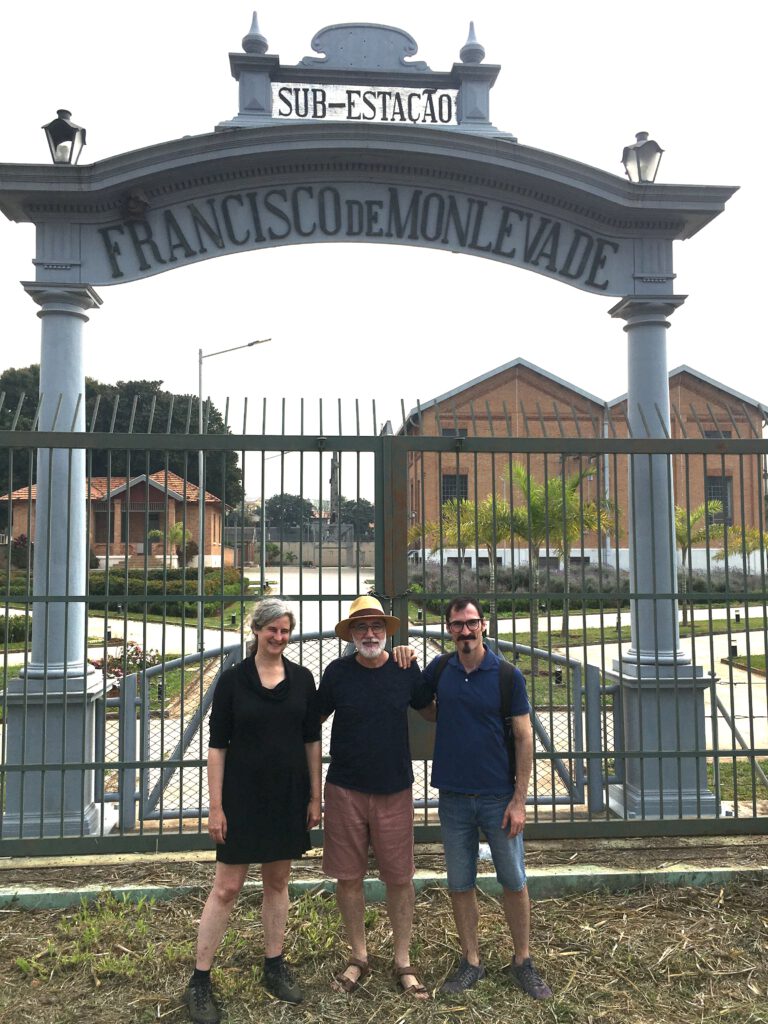
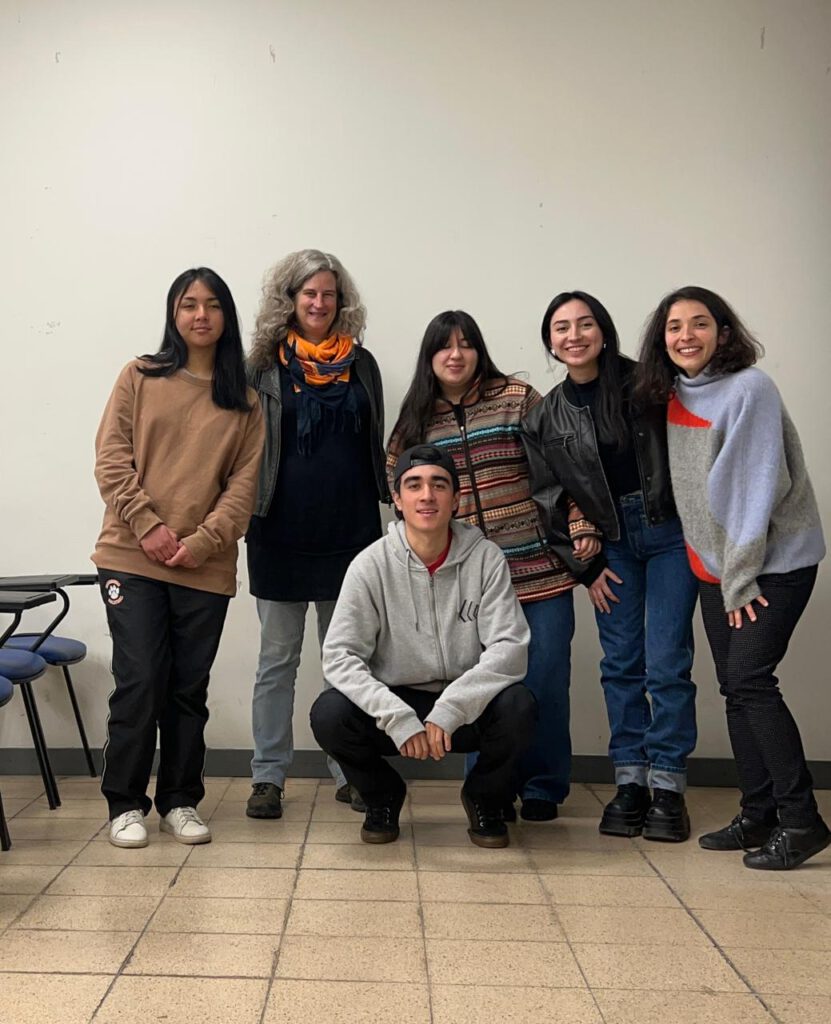
*** English see below *** Deutsch siehe unten***
Proyecto FONDECYT de Iniciación no. 11230957 financiado por la Agencia Nacional de Investigación y Desarrollo (ANID) de la República de Chile, adjudicado en enero de 2023 en el Grupo de Estudio Historia (ver aquí) para un periodo de ejecución de tres años (2023-2026).
Investigadora responsable: Marion Steiner. Universidad patrocinante: Universidad de Chile. Universidad patrocinante auspicio: Bauhaus-Universität Weimar, Alemania. Instituciones colaboradoras: Technische Universität Berlin y Berliner Zentrum Industriekultur, Alemania.
El proyecto nos permite profundizar las investigaciones que llevamos realizando desde hace más de diez años sobre el patrimonio eléctrico berlinés en Valparaíso y Santiago de Chile, esta vez desde una perspectiva comparativa que se abre hacia otros casos de la electrificación urbana alemana en América Latina, como lo son la capital mexicana CDMX y la ciudad portuaria brasileña Salvador de Bahía.
Resumen del proyecto: A fines del siglo XIX y principios del XX, América Latina era considerado un continente económicamente muy atractivo por las élites industriales y capitalistas del Imperio Alemán recién unificado. En el contexto de la segunda revolución industrial, y en particular con la revolución eléctrica a partir de 1880, Alemania, en permanente competencia con los Estados Unidos, desafió al Imperio Británico que lideraba la economía global en aquel entonces. Apoyadas por el sector bancario, que provisionaba el capital necesario para el crecimiento de la nueva industria, las empresas alemanas AEG y Siemens, ambas con sede en Berlín, y las estadounidenses General Electric y Westinghouse, rápidamente adquirieron una posición dominante en el mercado eléctrico mundial, actuando como Global Players al iniciarse el siglo XX.
En este contexto de una globalización temprana, el presente proyecto se define desde las diversas miradas de la historia de la tecnología, económica y cultural, lo cual permite analizar un conjunto de casos en su complejidad. Partiendo de investigaciones ya existentes sobre la electrificación de Valparaíso y Santiago de Chile, en la cual el grupo AEG-Deutsche Bank tenía un rol líder gracias a un acuerdo firmado con Siemens, como casos de estudio para el proyecto se han elegido Salvador de Bahía en Brasil y Ciudad de México. En Salvador, en base del mismo acuerdo con la AEG recién mencionado, Siemens lideró el proceso de la electrificación urbana aplicando estrategias económicas diferentes a las de la AEG, mientras que el caso de Ciudad de México permite analizar la competencia de los actores alemanes con sus pares estadounidenses. El análisis comparativo de los cuatro casos en tres países latinoamericanos evidencia las redes y relaciones humanas que existían entre los principales actores de la electrificación realizada desde el Imperio Alemán, y revela diferencias y similitudes en sus formas de actuar localmente en su conquista económica de América Latina.
Desde las diferentes miradas de la historia técnica, económica y cultural surge una división del proyecto en tres partes que incluye una revisión crítica de los grandes discursos modernizadores que han acompañado la implementación de los nuevos sistemas tecnológicos a gran escala en la región capitalina de Chile, Salvador de Bahía y Ciudad de México. El análisis pretende aportar una visión crítica del imperialismo tecnológico alemán en América Latina desde una perspectiva comparativa tanto Norte-Sur como Sur-Sur, para reconocer e interpretar patrones de la conquista eléctrica de América Latina por parte de la élite empresarial y financiera de la llamada “Elektrópolis Berlín”.
Metodológicamente, la investigación se basa en la recopilación y el análisis multilingüe de material bibliográfico, archivístico y documental, que se realizará en estrecho y permanente contacto colaborando con colegas alemanes, mexicanos, brasileños y chilenos, celebrando además una serie de actividades de cooperación internacional, de vinculación y salidas de terreno en conjunto.
La propuesta es novedosa en el sentido de que indaga en la incidencia alemana en la electrificación de América Latina analizando contextos y procesos paralelos a escala global y local a la vez; aplica una perspectiva amplia que permite cruzar las miradas y abrir la discusión entre las disciplinas; aporta al debate internacional garantizando así impacto y comparación científica de sus resultados; y revela la necesidad de reconceptualizar el patrimonio industrial desde el Sur.
Aprovechando el alto nivel de las cooperaciones internacionales sobre las cuales se construyó el proyecto, la divulgación del conocimiento hacia un público general representa un eje adicional muy importante. Esto se ve reflejado tanto en la definición de una estrategia de publicación para difundir el conocimiento científico, como en la realización de actividades con la comunidad científica internacional, actores de la sociedad civil locales e instituciones públicas en varios países, responsables de la interpretación, conservación y gestión sostenible del patrimonio.
Descargar el resumen del proyecto en español.
***
Light, Power and Progress: German urban electrification of Latin America in its geo-political and cultural context, 1880-1920
FONDECYT Iniciación Research Project no. 11230957, funded by the National Agency for Research and Development (ANID) of the Republic of Chile, awarded in January 2023 in the History Study Group for a three-year period of execution (2023-2026).
Project director: Marion Steiner. Host university: Universidad de Chile. Partner university: Bauhaus-Universität Weimar, Germany. Collaborating partners: Technische Universität Berlin and Berliner Zentrum Industriekultur, Germany.
The project allows us to deepen the research we have been conducting for more than ten years on Berlin’s electrical heritage in Valparaíso and Santiago de Chile, this time from a comparative perspective that opens up to other cases of German urban electrification in Latin America, such as the Mexican capital CDMX and the Brazilian port city Salvador de Bahía.
Project summary: In the late 19th and early 20th centuries, Latin America was considered an economically attractive continent by the industrial and capitalist elites of the newly unified German Empire. In the context of the second industrial revolution, and in particular with the electric revolution from 1880 onwards, Germany, in permanent competition with the United States, challenged the British Empire that led the global economy at the time. Supported by the banking sector, which provided the necessary capital for the growth of the new industry, the German companies AEG and Siemens, both based in Berlin, and the American companies General Electric and Westinghouse, quickly acquired a dominant position in the world electricity market, acting as Global Players at the turn of the 20th century.
Against this background of early globalisation, the present project is defined from the different perspectives of technological, economic and cultural history, which enables a complex set of cases to be analysed. Based on existing research on the electrification of Valparaíso and Santiago de Chile, in which the AEG-Deutsche Bank Group played a leading role thanks to an agreement with Siemens, Salvador de Bahía in Brazil and Mexico City were chosen as case studies for the project. In Salvador, on the basis of the same agreement with AEG mentioned just above, Siemens led the process of urban electrification by applying different economic strategies than AEG, while the case of Mexico City allows to analyse the competition of German actors with their American counterparts. The comparative analysis of the four cases in three Latin American countries shows the networks and human relations that existed between the main actors in the electrification carried out by the German Empire, and reveals differences and similarities in the ways in which they acted locally in their economic conquest of Latin America.
From the different perspectives of technical, economic and cultural history, the project is divided into three parts that include a critical review of the major modernising discourses that have accompanied the implementation of the new large-scale technological systems in the capital region of Chile, Salvador de Bahía and Mexico City. The analysis aims to provide a critical view of German technological imperialism in Latin America from a comparative North-South and South-South perspective, in order to recognise and interpret patterns of the electrical conquest of Latin America by the business and financial elite of the so-called “Elektropolis Berlin”.
Methodologically, the research is based on the compilation and multilingual analysis of bibliographic, archival and documentary material, which will be carried out in close and permanent contact with German, Mexican, Brazilian and Chilean colleagues, as well as through a series of international cooperation activities, networking and joint field trips.
The proposal is novel in the sense that it investigates the German impact on the electrification of Latin America by analysing parallel contexts and processes on a global and local scale at the same time; it applies a broad perspective that allows for a cross-disciplinary approach and open discussion between disciplines; it contributes to the international debate, thus guaranteeing impact and scientific comparison of its results; and it reveals the need to reconceptualise the industrial heritage from the South.
Taking advantage of the high quality of the international networks on which the project was built, the dissemination of knowledge to the general public represents an important additional axis. This is reflected both in the definition of a publication strategy to disseminate scientific knowledge, and in the implementation of activities with the international scientific community, local civil society actors and public institutions in several countries responsible for the interpretation, conservation and sustainable management of heritage.
***
Licht, Macht und Fortschritt: Die deutsche Elektrifizierung von Städten Lateinamerikas in ihrem geopolitischen und kulturellen Kontext, 1880-1920
Forschungsprojekt FONDECYT Iniciación Nr. 11230957, finanziert von der Nationalen Agentur für Forschung und Entwicklung (ANID) der Republik Chile, bewilligt im Januar 2023 in der Studiengruppe Geschichte für einen dreijährigen Durchführungszeitraum (2023-2026).
Projektverantwortliche: Marion Steiner. Ausführende Partnerinstitution: Universidad de Chile. Fördernde Partnerinstitution: Bauhaus-Universität Weimar, Deutschland. Weitere Partnerinstitutionen: Technische Universität Berlin und Berliner Zentrum Industriekultur.
Das Projekt ermöglicht uns, die seit mehr als zehn Jahren betriebene Forschung über das elektrische Erbe Berlins in Valparaíso und Santiago de Chile zu vertiefen, diesmal aus einer vergleichenden Perspektive, die auch andere Fälle deutscher städtischer Elektrifizierung in Lateinamerika einbezieht, wie die mexikanische Hauptstadt CDMX und die brasilianische Hafenstadt Salvador de Bahía.
Projektzusammenfassung: Im späten 19. und frühen 20. Jahrhundert wurde Lateinamerika von den industriellen und kapitalistischen Eliten des neu geeinten Deutschen Reiches als wirtschaftlich attraktiver Kontinent angesehen. Im Zusammenhang mit der Zweiten Industriellen Revolution und insbesondere mit der Elektrischen Revolution ab 1880 forderte Deutschland in ständigem Wettbewerb mit den Vereinigten Staaten das britische Empire heraus, das zu dieser Zeit die Weltwirtschaft anführte. Unterstützt durch den Bankensektor, der das notwendige Kapital für das Wachstum der neuen Industrie bereitstellte, erlangten die deutschen Unternehmen AEG und Siemens, beide mit Sitz in Berlin, sowie die amerikanischen Unternehmen General Electric und Westinghouse schnell eine beherrschende Stellung auf dem Weltmarkt für Elektrizität und traten zu Beginn des 20. Jahrhunderts als Global Players auf.
Vor diesem Hintergrund der frühen Globalisierung wird das vorliegende Projekt aus verschiedenen technologie-, wirtschafts- und kulturgeschichtlichen Perspektiven definiert, was die Analyse einer komplexen Fallkonstellation ermöglicht. Ausgehend von bestehenden Untersuchungen zur Elektrifizierung von Valparaíso und Santiago de Chile, wo die AEG-Deutsche Bank Gruppe dank einer Vereinbarung mit Siemens eine führende Rolle spielte, wurden Salvador de Bahía in Brasilien und Mexiko-Stadt als Fallstudien für das Projekt ausgewählt. In Salvador führte Siemens auf der Grundlage des oben erwähnten Abkommens mit der AEG den Prozess der städtischen Elektrifizierung an, indem es andere wirtschaftliche Strategien anwandte als die AEG, während der Fall Mexiko-Stadt eine Analyse des Wettbewerbs zwischen deutschen Akteuren und ihren US-amerikanischen Pendants ermöglicht. Die vergleichende Analyse der vier Fälle in drei lateinamerikanischen Ländern zeigt die Netzwerke und zwischenmenschlichen Beziehungen, die zwischen den Hauptakteuren der vom Deutschen Reich durchgeführten Elektrifizierung bestanden, und offenbart Unterschiede und Gemeinsamkeiten in der Art und Weise, wie sie bei ihrer wirtschaftlichen Eroberung Lateinamerikas vor Ort agierten.
Aus den verschiedenen Perspektiven der Technik-, Wirtschafts- und Kulturgeschichte gliedert sich das Projekt in drei Teile, die eine kritische Betrachtung der wichtigsten Modernisierungsdiskurse beinhalten, die die Einführung der neuen großtechnischen Systeme in der Hauptstadtregion von Chile, Salvador de Bahía und Mexiko-Stadt begleitet haben. Die Analyse zielt darauf ab, einen kritischen Blick auf den deutschen Technologieimperialismus in Lateinamerika aus einer vergleichenden Nord-Süd- und Süd-Süd-Perspektive zu werfen, um Muster der elektrischen Eroberung Lateinamerikas durch die Wirtschafts- und Finanzelite der so genannten “Elektropolis Berlin” zu erkennen und zu interpretieren.
Methodisch stützt sich die Forschung auf die Zusammenstellung und mehrsprachige Analyse von bibliographischem, archivarischem und dokumentarischem Material, wobei in engem und ständigem Kontakt mit deutschen, mexikanischen, brasilianischen und chilenischen Kollegen gearbeitet und eine Reihe internationaler Kooperations- und Netzwerkaktivitäten sowie gemeinsame Exkursionen durchgeführt wird.
Das Forschungsvorhaben ist insofern neuartig, als es den deutschen Einfluss auf die Elektrifizierung Lateinamerikas untersucht, indem parallele Kontexte und Prozesse auf globaler und lokaler Ebene gleichzeitig analysiert werden; es eine breite Perspektive angewendet, die einen disziplinübergreifenden Ansatz und eine offene Diskussion zwischen den Disziplinen ermöglicht; es zur internationalen Debatte beiträgt und so die Wirkung und den wissenschaftlichen Vergleich seiner Ergebnisse garantiert; und es zeigt die Notwendigkeit auf, das industrielle Erbe aus Sicht des Südens neu zu konzipieren.
Unter Ausnutzung der hohen Qualität der internationalen Netzwerke, auf die sich das Projekt stützt, stellt die Vermittlung von Wissen an die breite Öffentlichkeit eine wichtige zusätzliche Achse dar. Dies spiegelt sich sowohl in der Definition einer Publikationsstrategie zur Verbreitung wissenschaftlicher Erkenntnisse als auch in der Durchführung von Aktivitäten mit der internationalen wissenschaftlichen Gemeinschaft, lokalen zivilgesellschaftlichen Akteuren und öffentlichen Einrichtungen in mehreren Ländern wider, die für die Interpretation, Erhaltung und nachhaltige Nutzung des Kulturerbes zuständig sind.
**
MILESTONE EVENTS
1.6.2023: Presentación online del proyecto / Online presentation of the project / Virtuelle Präsentation des Projekts, Electrical/Energy History Research Group, Leeds, United Kingdom.
3.8.2023: Lanzamiento del proyecto / Kick-off event / Auftaktveranstaltung “Agua y Luz en Valparaíso y Placilla”, Museo Histórico de Placilla, Valparaíso, Chile.
23-25.9.2023: Presentación del proyecto y reuniones / Project presentation and meetings / Projektvorstellung und Partnertreffen, Museu Històric de Barcelona, MUHBA Oliva Artés, Poblenou, España.
28.9.2023: Ponencia / Lecture / Vortrag “Luz, Poder y Progreso”, XXV Jornadas Internacionales de Patrimonio Industrial, INCUNA, Gijón, España.
13-15.10.2023: Visitas de cooperación international / Field visits with international guests / Exkursion mit internationalen Gästen al Museo Histórico de Placilla y la Central Hidroeléctrica El Sauce, Valparaíso, Chile.
16-20.10.2023: Exposición / Exhibition / Ausstellung, IV Congreso Internacional e Interdisciplinario de Patrimonio Cultural, Gobierno Regional del Biobío, Concepción, Chile.
17.10.2023: Visita a la Central Hidroeléctrica Chivilingo / Visit of the Chivilingo hydroelectric power station / Besichtigung des Wasserkraftwerks Chivilingo, Biobío congress site visits, Lota, Chile.
24+26.10.2023: Ponencias / Lectures / Vorträge, Marion Steiner y Pamela Fuentes, X Coloquio Latinoamericano para la Conservación del Patrimonio Industrial, TICCIH, Monterrey, México.
29.10.2023: Visita a la Central Hidroeléctrica de Necaxa / Visit of the Necaxa hydroelectric power station / Besichtigung des Wasserkraftwerks von Necaxa, Puebla, TICCIH post congress tour, Zacatlán, México.
17.11.2023: Visita de la Mesa Ciudadana de Patrimonio, Cultura y Turismo de Lota en Valparaíso / Visit of the Citizen’s Roundtable on Heritage, Culture and Tourism in Valparaíso / Besuch des Bürgerschaftlichen Runden Tisches zu Erbe, Kultur und Tourismus von Lota in Valparaíso, Museo Histórico de Placilla, Chile.
21 y 22.11.2023: Ponencia / Lecture / Vortrag “Luz, Poder y Progreso”, Taller latinoamericano para la Historia de la Tecnología, FAU, Universidad de Chile, Santiago, Chile.
24.11.2023: Visita al valle del estero El Sauce y la termoeléctrica de Laguna Verde / Field visit to the El Sauce valley and Laguna Verde power plant / Exkursion ins El Sauce-Tal und zum Kohlekraftwerk von Laguna Verde, ICOHTEC, Valparaíso, Chile.
22.1.2024: Ponencia / Lecture / Vortrag “Historiografías desde la Comunidad”, Coloquio de Patrimonio Industrial, Universidad de Valparaíso, Facultad de Humanidades y Educación, Chile.
4.4.2024: Ponencia / Lecture / Vortrag “Paisajes culturales de la industria en Chile”, Universidad Nacional Autónoma de México (UNAM), Ciudad de México, México.
18.4.2024: Ponencia / Keynote / Vortrag “Reviewing TICCIH’s Nizhny Tagil Charter: Industrial Heritage in the 21st Century”, Asian Network of Industrial Heritage (ANIH), Taichung City, Taiwán.
19.4.2024: Ponencia / Lecture / Vortrag “Sharing industrial heritage glocally: El Sauce y La Luz”, DéPOT Roundtable Series, University of Illinois, United States of America.
7.5.2024: Ponencia / Lecture / Vortrag “Global Industrial Heritage Interpretation: A View from Latin America”, International Industrial Heritage Workshop organized by the Heritage Commission of the Kingdom of Saudi Arabia, Rihayd, Saudi Arabia.
13.5.2024: Ponencia / Lecture / Vortrag “Imperiale Ströme: Das frühe Lateinamerika-Geschäft der AEG”, Forschungskolloquium Technikgeschichte der TU Berlin in Kooperation mit dem Arbeitskreis Technikgeschichte des Vereines Deutscher Ingenieure (VDI), Casa Central de la TU Berlín, Alemania.
21.5.2024: Ponencia / Lecture / Vortrag “Elektropolis in Übersee: Glokale Historiographien und geteiltes Erbe”, Ringvorlesung des gemeinsamen DFG-Graduiertenkollegs 2227 “Identität und Erbe” der Bauhaus-Universität Weimar und der TU Berlin, Biblioteca de la TU y la UDK Berlín, Alemania.
17.6.2024: Taller / Workshop “AEG-Geschichte in Lateinamerika”, Deutsches Technikmuseum Berlin in Kooperation mit dem Berliner Zentrum Industriekultur (BZI), Museo Alemán de la Tecnología, Berlin, Alemania.
11.7.2024: Ponencia / Lecture / Vortrag “Historiografías desde la comunidad glocal: Hacia una patrimonialización crítica del Complejo Hidroeléctrico El Sauce y La Luz en Valparaíso”, Congreso Mundial de ICOHTEC/SHOT 2024, Universidad Adolfo Ibáñez, Viña del Mar, Chile.
13-15.07.2024: Visitas de cooperación international / Field visits with international guests / Exkursion mit internationalen Gästen al Museo Histórico de Placilla y la Central Hidroeléctrica El Sauce, en el marco del congreso ICOHTEC/SHOT 2024, Valparaíso, Chile.
16-27.7.2024: Viajes de cooperación internacional en Valparaíso y al Desierto de Atacama, visitando sitios de patrimonio industrial y de extractivismo contemporáneo, evaluando opciones para futuras cooperaciones, con Prof. Dr. Heike Weber, catedrática de Historia de la Tecnología de la TU Berlín.
5-12.8.2024: Visitas a paisajes de extractivismo minero y sistemas hidroeléctricos en el norte de Suecia, con Miles Oglethorpe, Presidente de TICCIH, y el equipo de Prof. Dr. Dag Avango, catedrático de Historia de la Tecnología de la Universidad Técnica de Luleå.
15.8.2024: Ponencia / Lecture / Vortrag “Retos y posibilidades de la conservación del patrimonio industrial en las próximas décadas del siglo XXI”, Opening keynote, IV Congresso Nacional para Conservação do Patrimônio Industrial & VII Jornada de Jovens Pesquisadores, Faculty of Architecture, Arts and Communication, UNESP university, Bauru campus, São Paulo, Brasil.
20.8.2024: Ponencia / Lecture / Vortrag “El negocio del progreso: Historiografías críticas y el patrimonio industrial en busca del futuro”, Jornadas de patrimonio industrial, Faculdade de Ciencias e Letras (FCLAs), UNESP university, Assis, São Paulo, Brasil.
21-25.8.2024: Visitas al Sistema Ferroviario Eléctrico de Santos – Paranapiacaba – São Paulo – Jundiaí – Louveira – Campinas, con Ewerton Moraes (postdoc UNESP, São Paulo, Brasil), Eduardo Romero (TICCIH Brasil) y Juan Cano (Universidad de Pekín, China).
13.9.2024: Ponencia / Lecture / Vortrag “Historiografías críticas y el patrimonio industrial. Un testimonio personal”, Escuela de Arquitectura, Universidad San Sebastián, sede Concepción, Chile.
25.10.2024: Ponencia / Lecture / Vortrag “Luz, Capital y Geopolíticas: Luz, Capital y Geopolíticas: La electrificación urbana alemana en América Latina hasta la Primera Guerra Mundial”, Núcleo de Historia, Facultad de Filosofía y Humanidades, Universidad de Chile, campus Ñuñoa, Santiago de Chile.
23.11.2024: Ponencia / Lecture / Vortrag “La hidroelectricidad en Chile: historiografías críticas, patrimonio industrial y perspectivas para el futuro energético”, Escuela de Verano “Paisajes y transiciones energéticos”, Heidelberg Center para América Latina, Providencia, Santiago de Chile.
16.04.2025: Ponencia / Lecture / Vortrag “El rescate del patrimonio industrial como un desafío social colectivo: construyendo conocimiento y comunidad glocales”, Doctorado en Humanidades Aplicadas, Universidad Andrés Bello, Santiago de Chile.
27.08.2025: Ponencia / Lecture / Vortrag: “Global Networks of Power: Industrial legacies of German urban electrification in Latin America”, TICCIH World Congress 2025, Kiruna, Suecia.
27.08.2025: Ponencia / Lecture / Vortrag: “The Protection of Industrial Heritage through a Community Museum”, TICCIH World Congress 2025, Kiruna, Suecia.
10.10.2025: Ponencia / Lecture / Vortrag: “Mächtige Netze: Das imperiale Erbe deutsche Elektrifizierung in Lateinamerika”, GAG-Jahrestagung 2025, Berlín, Alemania.
**
PUBLICACIONES
Marion Steiner & Pamela Fuentes, 2024: “Glocal historiographies and critical industrial heritage: Striving for a multidimensional heritagization of the El Sauce y La Luz hydroelectric complex in Valparaíso“, TICCIH Bulletin 103, pp. 30-33
Marion Steiner, 2025: “Electropolis Berlin – A New Urban Vision Fuelled by Coal and Imperial Ambitions.” In: Timothy Moss (ed.): Grounding Berlin. Ecologies of a Technopolis, 1871 to the present. Pittsburgh: University of Pittsburgh Press, series History of the Urban Environment, Chapter 1, pp. 31-56, ISBN 9780822948322
Marion Steiner, 2025: “Industrial Heritage From the South: Decolonial Approaches to the Social Construction of Heritage and Preservation Practices.” In: Tim Strangleman, Steven High, Sherry Linkon, Stefan Berger, Jackie Clarke, David Nattleingham (eds.): The Routledge International Handbook of Deindustrialization Studies. Londres: Routledge, Chapter 27, pp. 459-483, DOI: 10.4324/9781003308324-38
Marion Steiner (in process): “Coal or Waterpower? Conflicting Views of Local and Global Actors in the Electrification of Metropolitan Chile before World War I“. In: Carlos Sanhueza, Helge Wendt (eds.): A Global History of Energy in Chile. Experts, Transitions, and Imaginaries. Leiden: Brill
**
MENCIONES
en la prensa nacional chilena:
Flor Arbulú Aguilera, Investigación chilenoalemana releva el patrimonio eléctrico de Valparaíso, El Mercurio de Valparaíso, 08.07.2024, p. 19
María Cecilia de Frutos D., Restos de una joya industrial, El Mercurio (Santiago de Chile), Revista Vivienda y Diseño, 20.07.2024, pp. 6-7
en revistas científicas internacionales:
Antoni Roca i Rosell, Chile, ICOHTEC, SHOT, TICCIH, julio 2024: La eclosión latinoamericana?, Quaderns d’història de l’enginyeria, 2024, vol. XXII, pp. 205-217. http://hdl.handle.net/2117/420847


